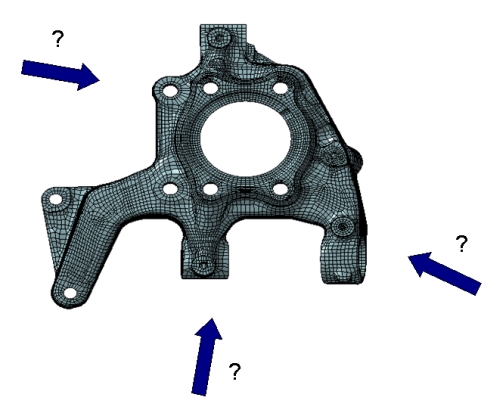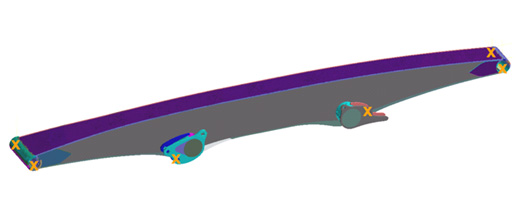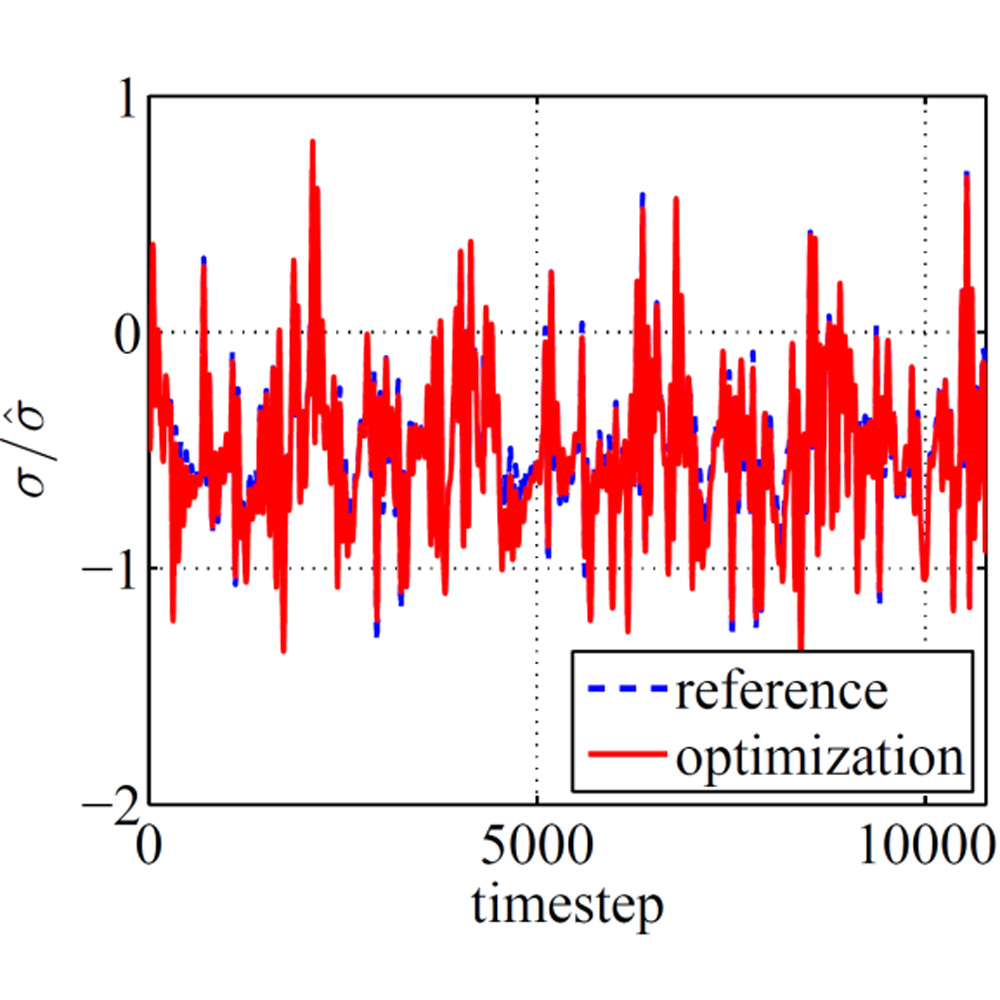When testing vehicle components on servo-hydraulic test rigs, it is necessary to ensure that the excitation is as close as possible to the excitation of the component in the driving vehicle. This should be accomplished using a rig configuration which is as simple as possible, i.e. a configuration that needs as few actuators as possible and time series as short as possible.
The mathematical modeling and simulation of the component and the rig configurations enable the application of optimization methods to solve the problem. A rig configuration consists of mounting points, positions of actuators and excitation signals.
We have developed suitable methods to get an optimal rig configuration avoiding the effort of repeated finite elements computations for different mountings.
Optimization Goals
For the optimization of damage values on defined points of the component, the excitation signals consist of block loads with different amplitudes. This allows also for a short length of the excitation signals. To reproduce stresses for defined critical points, more complex excitation signals are necessary.
In both cases, the task is to find a good compromise for the different competing optimization goals. This is supported by the automated calculation and assessment of different solutions.
The approach is developed further in corporation with the department for optimization and has been successfully applied in various industry projects.



